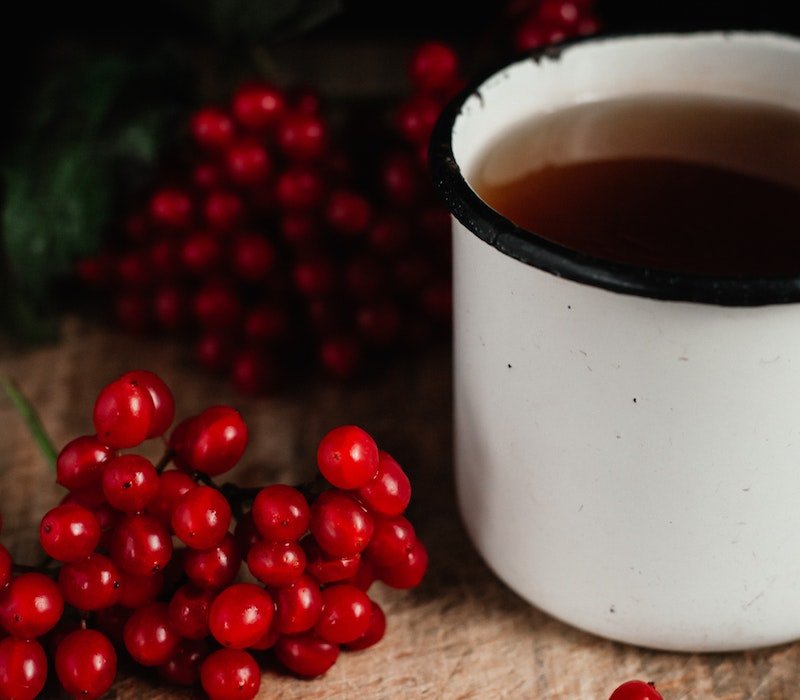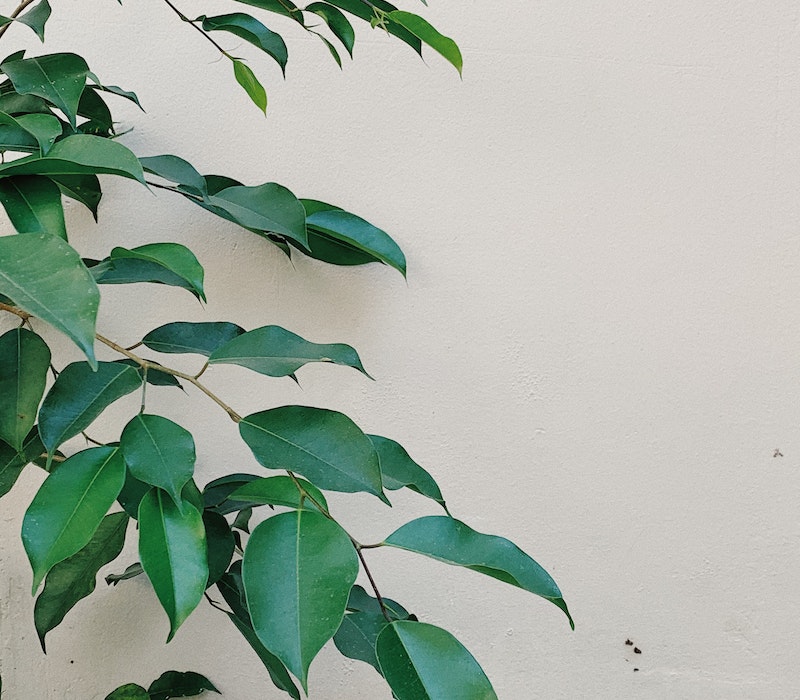Whenever you hear tea berries you can be a little bit confused but that’s why we are here for. Furthermore, I will try to tell you as much as possible in the article below.
Page Contents
Tea Berry
An evergreen shrub species belonging to the Ericaceae family is called Gaultheria procumbens. Great Britain introduced this plant was brought to after being famous in eastern North America.
There are numerous common names for it, including Wintergreen and Tea Berry. Due to its evergreen habit and tolerance to low light, it makes a fantastic indoor plant for the winter.
This plant normally reaches a height of 15 cm and has a dwarfed, spreading habit. Aromatic foliage has a rounded, leathery texture that becomes a lovely scarlet in the winter. Small, bell-shaped, white-pink flowers follow by producing vivid red berries that are about 1 cm across.
The Royal Horticultural Society has given this plant the Award of Garden Merit.
Teaberry Planting And Growing Instructions
The planting time for tea berries is in late spring.
Choose a spot with good flow, good nutrients, and partial shade.
Bring a freshly dug healthy plant into a shaded area with a generous root system and plant as deep as the roots will allow without stretching.
In general, if you are planting from seed instead, plant the seeds 2 to 3 inches deep, leaving at least 4 inches of space for growth between seeds. Keep the soil moist at all times.
It is expected that germination will begin in about 6 to 8 weeks. Once done, as a result, tea berries will increase naturally and require little to no care.
Tea Berries Plant Description
Teaberry is a small native shrub, usually about 10 to 20 cm tall, a creeping, spreading, low-growing evergreen rhizomatous shrub. The plant grows in barren forests and glades, under evergreen trees, sandy and barren plains, mountainous areas,
Messian forests, dry acid forests, coniferous forests, marshes and marshes, road embankments, old meadows, and bare grows on the mountain heath of The plant prefers moist, but not too moist, humus-rich soil. A peat- and moisture-loving species that require lime-free soil.
Once established, it thrives in dry soils and tolerates considerable drought. Ascending semi-lignified stems are sparsely branched. The root system has shallow rhizomes, from which clonal subshrubs develop. These stems are bright green to bright red and more or less true.
They are covered with sparse to moderately pressed white hairs. The branches are slender and green, turning brown with age.
Tea Berries Leaves
The evergreen leaves alternate along the stem. The leaves are 2 to 5 cm long and 1/3 to 1/2 wide. Despite this, they are oval, ovoid, obovate, or oval. Leaf margins are sparsely toothed and bristly.
The upper surface of the leaf is medium to dark green, glabrous, and glossy, while the lower surface of the leaf is light green, glabrous to sparsely hairy, and dull.
Moreover, the leaf structure is somewhat stiff and leathery, with pinnate veins. Petioles are pale green to pale red and less than 6 mm long. They are covered with sparse to moderately pressed white hairs.
The leaves of this subshrub have a minty (or evergreen) scent, especially when crushed. Single or short clusters of 2-5 nodding flowers arise from the upper leaf axils.
Tea Berries Flower
Each flower is about 1/3 inch (8 mm) long, with a white bell-shaped corolla (sometimes pink) and five short lobes that curl outward, a white calyx with five ovate lobes, and an inset. Consists of 5 stamens and a pistil.
One strong style. The calyx is much shorter than the corolla. At the base of each flower are a pair of small ovate to heart-shaped bracts.
These bracts are pale green, white, or red with a membranous margin. Flower stalks are up to 1/3 inch (8 mm) long, pale green to red, and more or less cylindrical. They are sparse to moderately covered with pinched white hairs. The flowering period lasts about three weeks from early summer to mid-summer. Flowers should smell.
Tea Berries Fruit

The fertile flowers then replace small berry-like capsules that mature in late summer or early fall. The ripe fruits are about 1/4 to 1/3 inch or more in diameter and globose. The fruits at the start are very bright green (late August to early September), usually becoming bright red around October, with slightly sweet flesh and a minty taste.
The underside of each berry has a unique fold and numerous small seeds. However, the berries often remain throughout the winter, unless eaten by wildlife or passers-by, and are said to be larger and tastier in the spring than in the fall.
Furthermore, berries are excellent winter fodder for wildlife such as pheasants, grouse, squirrels, and deer.
The leaves were once used to make wintergreen oil, an astringent, stimulant, and diuretic. Wintergreen is a popular flavoring for chewing gum, candy, and toothpaste.
Some tea is made from the dried leaves of Teaberry but this use is no longer needed. The leaves were once used as poultices for joint pain and muscle aches and Eaten raw or added to pastries and salads.
Tea Berries Uses And Benefits
- Checkerberry leaves were widely used by native North American Indians to relieve pain while hunting or carrying heavy loads and to aid breathing.
- Similarly, the leaves and oil are anti-inflammatory, aromatic, astringent, and digestive, and have diuretic, aphrodisiac, stimulant, and tonic effects.
- Leaf infusions are used to relieve gas and colic. The plant in essential oil form is most useful when applied externally to treat acute cases of rheumatism, sciatica, muscle pain, sprains, neuralgia, and catarrh.
- The oil is sometimes used to treat cellulite, a bacterial infection that causes skin irritation. Not recommended for patients hypersensitive to salicylic acid (aspirin).
- Strengthens and relaxes the muscles of the uterus. Great for menstrual cramps.
- Tea Berries lotion helps relieve pain after breastfeeding. Tea Berries tea cures headaches, muscle aches, and colds.
- Relieves pelvic congestion.
- Relieves mucus secretion of fluoride.
- Helps with childbirth.
- Reduces catarrh and excess mucus.
- It is effective in treating diarrhea and colitis.
- It has a calming effect on the nervous system. Relieves nervous fatigue and irritability.
- Most importantly, it is effective against swelling.
Some Other Uses Tea Berries Are
- American Indians reportedly used wintergreen to treat back pain, rheumatism, fever, headaches, and sore throats. It has been used in traditional medicine to reduce bleeding from blood vessels.
- In addition, tea was used to relieve cold symptoms and muscle pain. Its oil has been used on the skin as a preparation to treat muscle and rheumatic pains.
- Teaberry tea is often used to relieve headaches. Tea is also consumed to reduce joint pain and inflammation.
- It is also used for digestive problems such as abdominal pain and bloating (flatulence). lung diseases, including asthma and pleurisy; pain and swelling (inflammation); fever; and kidney problems.
- Some people use small amounts of oil to increase gastric juices and improve digestion.
- The leaves can also be applied directly to the skin to relieve joint pain (rheumatism), muscle pain, and back pain.
- Teaberry oil is applied to the skin as an “anti-irritant” to relieve muscle pain. Teaberry oil is also used to kill bacteria on the skin, used to heal muscle contractions such as arthritis, rheumatism, or back pain.
- It is also used to treat bladder infections and urinary tract disorders. It has also been used to relieve headaches in children.
- The leaves have also been used as a mouthwash for headaches and other aches and pains in the throat and mouth.
FAQs
Yes, teaberries are edible.
If you take a look these teaberries are basically native to New England and along with that it is also found in North Eastern parts of the United States and Canada
Conclusion
First, after this, I am quite sure that if you had any answers before then they are cleared till now. Second, if you want to read any more articles related to lifestyle, health or healthy food then take a look at these articles

